How to Perform Base Stabilization
BY AsphaltPro Staff
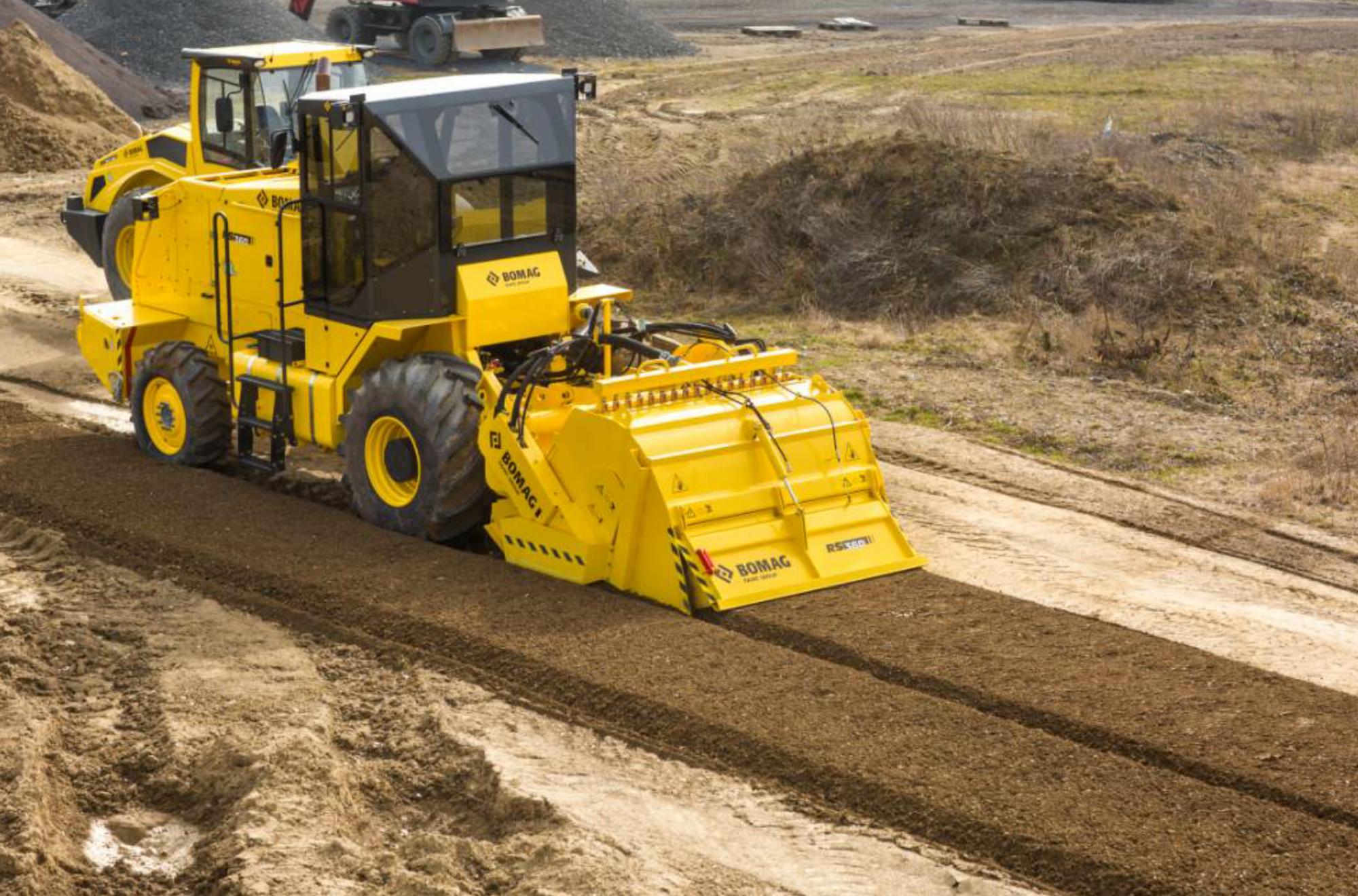
Don’t let poor base or soil quality affect the quality of your asphalt mat! AsphaltPro outlines the best practices of how to perform base stabilization.
Base stabilization is the process of improving the characteristics of the material upon which a roadway sits, including improving the structural capacity. This makes it a valuable treatment option in any paving contractor’s toolbox.
When performed properly, base stabilization can result in a homogenous, well-graded material with improved structural characteristics. By re-using materials on-site, base stabilization requires less trucking and material handling, which can reduce construction time and save money. It also eliminates the potential for reflective cracking and can be used to adjust profile and cross slope and on roadways requiring widening.
Performing base stabilization properly relies on a number of best practices. Before we outline those, let’s talk about what base stabilization is, and what it is not.
What is Base Stabilization?
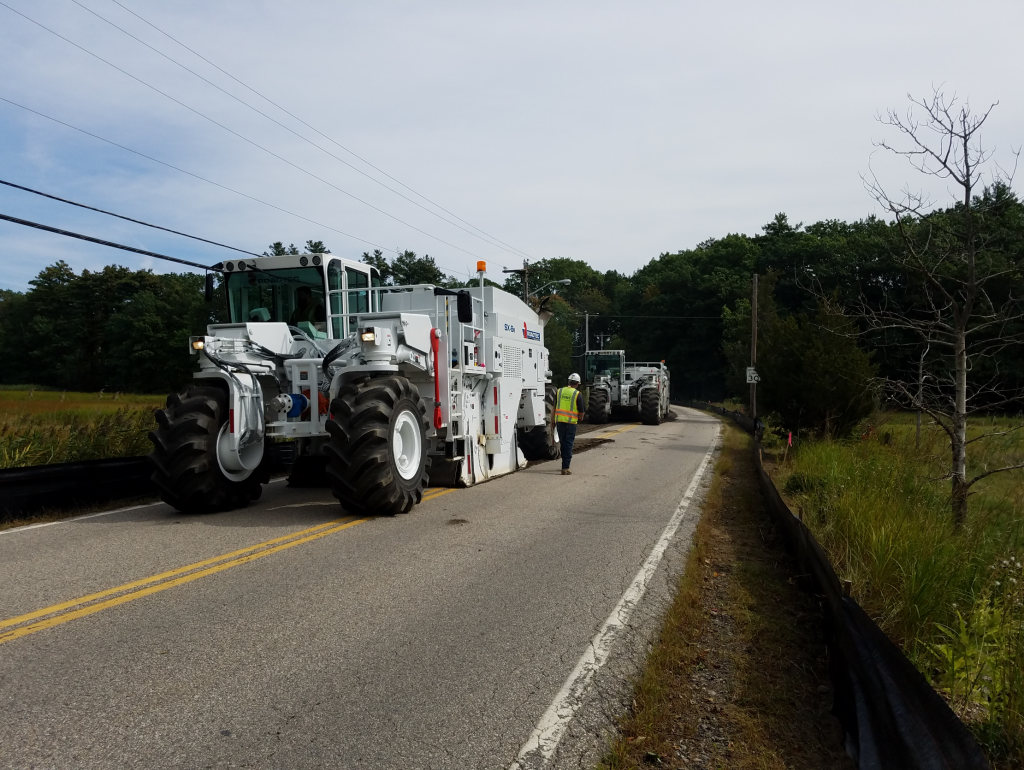
Base stabilization might be required for new road construction, but is also a component of full-depth reclamation (FDR) when all levels of the pavement have suffered damage.
“The chief benefit of base stabilization is the potential for a longer lasting pavement,” said Kyle Hammon, product manager for mills, stabilizers and brooms at Roadtec Inc., Chattanooga. “A sound base allows you to just maintain the surface layer, so the lifecycle cost of the pavement will be reduced.”
According to the Asphalt Recycling and Reclaiming Association (ARRA), stabilization can be done mechanically, chemically or with asphalt additives.
Each method begins by pulverizing the existing pavement layers and into the underlying base, sub-base or sub-grade layers. That’s what differentiates FDR from other rehabilitation techniques such as cold in-place recycling, which typically affects the upper layer or layers of the pavement rather than the entire road and base.
https://theasphaltpro.com/cross-train-your-crew/
The primary difference between base stabilization and soil stabilization is how much of the stabilized material is comprised of the former layers and base of the road versus soil beneath the roadway.
“Among contractors, the terms many times overlap,” said Matt White, North American Sales Manager for Milling and R/S products at BOMAG Americas, Ridgeway, South Carolina. “There’s nothing fundamentally different in terms of the process and application of those treatments.”
Let’s talk about the differences between mechanical, chemical and asphalt stabilization.
Mechanical stabilization uses the pulverized asphalt pavement as an aggregate sub-base, while adding recycled asphalt pavement, crushed virgin aggregate, or crushed concrete for additional strength. This process can be used on its own or alongside chemical and asphalt stabilizing additives.
Chemical stabilization is most suitable for granular, silty or clay materials with a Plasticity Index above six, ARRA recommends, depending on the stabilizers being used. Common options include cement, lime and fly ash, to name a few.
Asphalt stabilization relies on emulsified asphalt and foamed bitumen as additives. Asphalt stabilization results in more flexibility, compared to other base course materials and chemical stabilizers, and can be used alongside other additives.
Stabilizing Additive Options
According to ARRA, the type and amount of stabilizing additives is determined through core samples and soil survey information.
Depending on soil characteristics, certain additives are more popular in one region of the country than another. For example, White said, Florida usually uses cement to stabilize sandy subgrades, whereas Texas mostly uses lime to resolve higher clay contents.
“Lime can be used to reduce the plasticity of clay so it’s not so expansive and make it a usable soil,” White said. “It also has some cementitious properties.”
Cement, and also fly ash, are used to increase weight-bearing capacity. However, since fly ash is usually obtained through the coal burning process, its use depends on availability in any given area. Asphalt emulsion and foamed bitumen can increase weight-bearing capacity, but also improve flexibility.
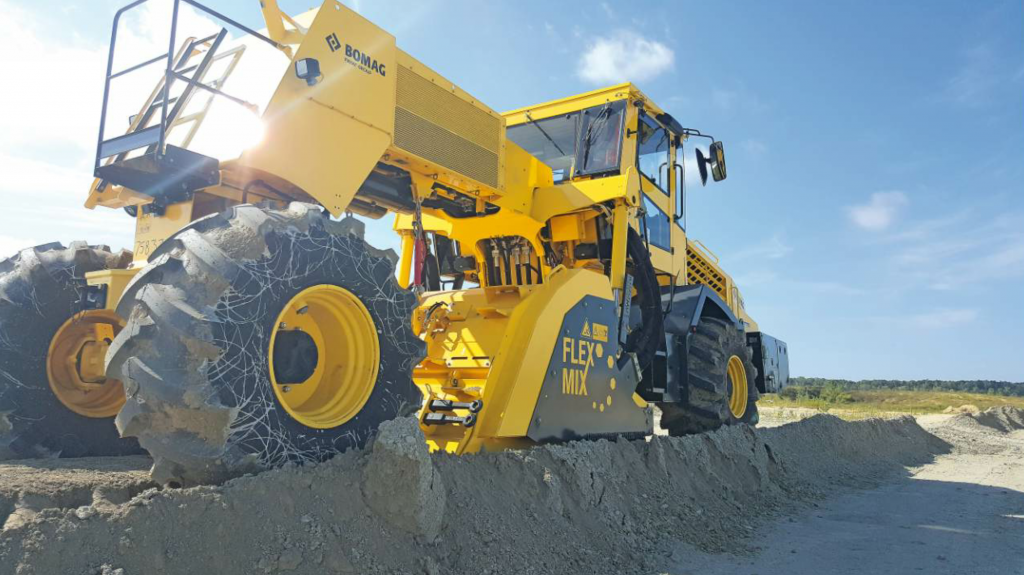
In some instances, White said, more than one stabilizing agent may be used simultaneously. For example, if the base has a high clay content, it might first be treated with lime and, later, emulsion or foamed bitumen.
Sometimes, different stabilizing additives will be used on different areas within the same project, if the soil characteristics vary widely from area to area.
Often, the stabilizing additive will be specified by the agency.
Hammon said it’s important for the foreman to speak to the inspector from the agency to talk about the additives being used and walk through the depth and composition of the existing materials. This is a good time to note areas where the pavement or soil composition may be different from the rest of the project. It’s also an opportunity to discuss the proper percentages of additive.
“The road authority or owner will have a specific amount of additive in percentage by mass they’re trying to mix in,” White said. The average amount of stabilizing agent depends on the soil characteristics and agent used, but White says it is normally between 2 and 4 percent of mass.
Pulverize the Pavement

To ensure proper pulverization, depth and speed are key.
White said it’s important to ensure you are pulverizing to the proper depth so you are reaching all the layers required by the design. This will require communication with the agency to identify underground obstacles, such as utilities.
Forward speed of the reclaimer is also important, as it will affect the gradation of the material coming out of the machine. “If you move forward too fast, you’ll have large pieces of asphalt that can create challenges when shaping and compacting the final product,” White said.
According to ARRA, pulverizing the existing pavement and distributing the additive can be done in one pass or multiple passes. In a single pass, the reclaimer may pulverize the existing pavement and underlying layers while adding and mixing stabilizing additives.
Adding the Additive
The most common chemical stabilization additives, lime and cement, can be spread or directly injected, either as a powder or as a liquid slurry. Asphalt stabilization additives will be injected as a liquid. Often, White said, slurry may be required in more populated areas to limit dust.
Stabilizing additives are normally distributed with either a spreader, a distributor truck, or metered through a system on-board the stabilizer/reclaimer. Hammon said you must ensure your equipment is properly calibrated, and that you are working at a consistent speed and depth to ensure you are using the correct percentage of additive.
“The optimum content [of the stabilizing additive] is a narrow range,” Hammon said. “If you use too much or too little, the strength will be reduced.”
In addition to distributing the additive, the contractor may need to apply water to achieve the proper moisture content. Since slurry is mostly comprised of water, additional moisture may not be needed when the additive is applied in slurry form.
“Moisture is key in all types of stabilization,” White said. For example, he adds, moisture content can change break time for emulsion. With almost all products, too little moisture can prevent proper compaction since the material won’t have enough lubricity to push those air voids out, White said. Too much moisture will cause delayed strength and pumping, when there is so much water in the material that, when pushed down, the water will push up other areas.
Shape, Compact, Sample
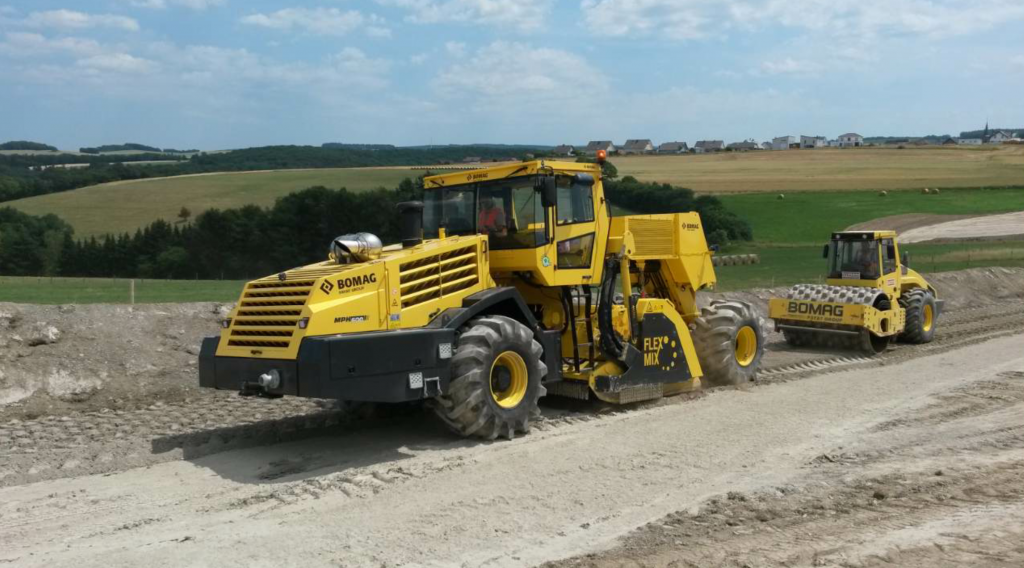
Immediately behind the reclaimer, White recommends a smooth drum or pad foot roller, depending on depth. “A pad foot roller provides improved compaction in thicker layers,” he added.
Once a lane-width has been pulverized and compacted, the crew will shape the material with a motor grader before performing final compaction, normally with a smooth drum roller and then a rubber tire roller to leave behind a smooth top for the surface treatment.
The depth at which you are stabilizing will determine the size of roller required. Typically, base stabilization ranges from 6 to 14 inches. “Our stabilizers will mix up to 24 inches deep, but you can only process how deep you can compact,” White said. “Most contractors’ rollers can compact around 10 to 12 inches.”
According to ARRA, a typical compaction sequence atop a stabilized base course includes breakdown rolling with a single-drum vibratory roller or a pad-foot compactor. Intermediate rolling can be accomplished with a 25- to 30-ton rubber tire roller or smooth single or double drum vibratory compactor. Finish rolling is with a single or double drum roller operating in static mode.
Establish a rolling pattern early, White said. As long as the soil does not significantly change within the project, a single rolling pattern may work throughout the job.
“If the material goes from silty there to sandy here, you’ll need to verify density or possibly establish a new roller pattern,” he said. Intelligent compaction tools, such as BOMAG’s Economizer, can be used to establish roller patterns and identify potential areas of failure. “It doesn’t give you a density reading, but it will be able to tell them that one area is stiffer than another.”
Lack of quality control is the most common mistake White sees on base stabilization jobs.
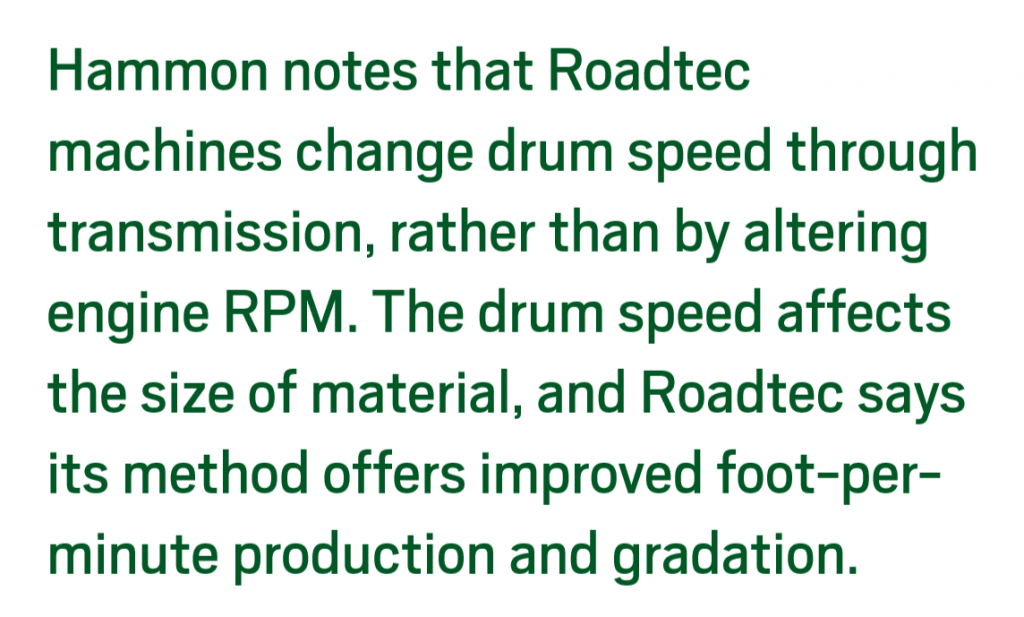
The specified density of any given material is established in the lab prior to performing the job. White says it’s imperative to use a nuclear density gauge (or similar) to verify that the crew is getting that density. The frequency will be determined by the project specifications.
Perhaps the material doesn’t have the correct moisture content. Although a nuclear density gauge can give the crew a guideline, White recommends determining the exact moisture content by weighing back the material, which is done by collecting and weighing a sample and drying it until the weight stops decreasing. This can be performed as a quick reference on the job site or an oven back at the lab.
“Any issues with density are easiest to correct if you catch them right out the back of the machine and roller,” White said. “If the crew didn’t get density in any particular spot, they need to figure out why and correct it.”
Time for Surface Treatment
Before applying any surface treatment, ARRA recommends ensuring you haven’t trapped any moisture in the stabilized base course. It may take up to seven days for the base to cure, depending on the additives used, atmospheric conditions, and other factors, before the contractor can apply a surface treatment.
“With recycled roads, you often have to allow traffic back on the road before you’ve applied the final wearing course of asphalt or surface treatment, such as chip seal,” White said. But, by opening the roadway to traffic before applying the surface treatment, you’re leaving it susceptible to damage from traveling and turning vehicles.
“A thin seal, such as a fog seal, can help protect the top while offering a breathable barrier to let moisture out,” White said. “It’s sort of like insurance on all of the work you’ve done.”
Common surface treatments atop stabilized base courses include chip seals, slurry seals, micro surfacing, cape seals and cold-mix overlays, and hot-mix overlays.
For the most part, the best practices of those applications do not change when they are applied atop a stabilized base.
White recommends being a bit more gentle when brooming any loose material off the top of a stabilized base before paving. “You don’t want to be so aggressive with the broom that you start raveling that material,” White said.
Hammon suggests using a track paver on stabilized surfaces. “You’re working on what looks like gravel,” Hammon said, “so the more tractive effort, the better.”
